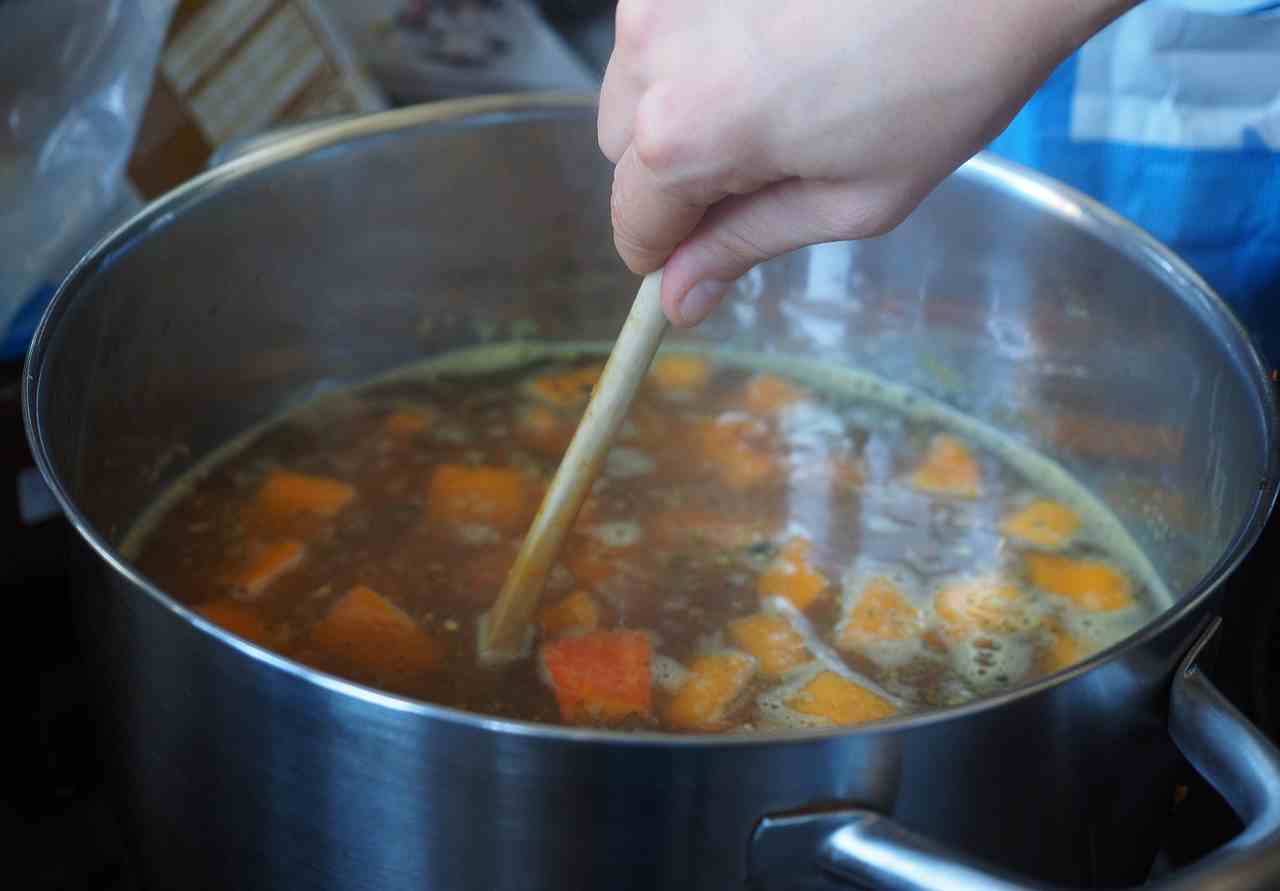
How to Make Vegetable Stock at Home
Vegetable stock is a wonderful base for soups, sauces, and many stews. It contains rich yet light flavors, making it a great solution for those who prefer vegetarian or vegan cooking or simply want a lighter dish. The stock adds layers of flavor and nutritional value to a dish, all using simple ingredients and a short preparation time.
I prefer to keep my vegetable stock relatively neutral—rich in the flavors of the vegetables themselves without seasoning—so that it can blend well into various recipes, picking up additional flavors. Making vegetable stock at home is easy and enjoyable, with the option to adjust its taste to fit the final dish.
Which Vegetables Can Be Used to Make Stock?
Vegetable stock can be made from a wide variety of vegetables and herbs, each contributing its own unique flavor. Common vegetables for stock include carrots, celery, onions, and sweet potatoes, but you can also use others. You can use whole vegetables or only vegetable scraps and peels (as long as they are well washed). It’s advised to avoid using vegetables like cauliflower or broccoli, as they can impart a bitter taste to the stock (although I haven’t tried this myself).
Ingredients for Vegetable Stock:
- Carrot
- Celery
- Onion
- Cold water
Regarding quantities: You can make stock with a little or a lot of vegetables, and feel free to add more vegetables based on your taste. The more vegetables, the more flavor.
Steps to Prepare the Stock:
- Preparation:
- Wash all vegetables thoroughly and cut them into large chunks. There’s no need to peel them, but you can if you prefer, as the peels contribute extra flavor and color. If using scraps and peels, ensure they are well washed before peeling.
- Adding Ingredients to the Pot:
- Place all the vegetables for the stock into a large pot. Cover them with water, about 2-3 cm above the height of the vegetables.
- Cooking the Stock:
- Bring the water to a boil, then reduce the heat to medium-high so that the liquid continues to simmer, but not as vigorously as a boil. The cooking time depends on how deep you want the flavors to be. You can cook the stock for about 15 minutes, or longer for a richer flavor. If foam accumulates on the surface, skim it off with a spoon (this usually doesn’t happen, but I can’t know which other vegetables you’ve added).
- Straining the Stock:
- Once the cooking is done, turn off the heat and let the stock cool slightly. Then strain the liquid. You can strain it using a fine mesh strainer or simply remove the vegetables if possible (depending on how you cut them).
Tips for Proper Preparation:
- Initial Heating of Vegetables (Optional, for flavor enhancement):
You can lightly sauté the vegetables in a little oil before adding water. Heating them softens the vegetables and adds more depth and flavor to the stock. - Balancing Flavors:
To get a well-balanced vegetable stock, avoid using too much of any one type of vegetable. - No Salt or Spices:
There’s no need to add salt while making the stock; it’s better to season the final dish according to taste. - Reduction:
If you want a more concentrated stock, you can continue to cook it after straining on low heat until it reduces to your desired amount. Keep in mind that it will continue to reduce as you cook the final dish with it. - Adding Parsley or Celery Root:
Adding parsley root or celery root can upgrade the flavor of the vegetable stock. - After Straining:
If you made the stock from whole vegetables, you can use the vegetables in other dishes or eat them after straining the stock.
How to Store the Stock:
- In the Refrigerator:
I always add the stock to a soup and store the soup in an airtight container in the refrigerator for up to 4 days. - In the Freezer:
You can freeze the stock and use it as needed. To thaw, you can do so in the refrigerator or even in a pot on low heat.
Tip – Pour the stock into ice cube trays or small containers to have small portions available at any time for adding to dishes or sauces.
Good luck and enjoy your meal!